 Sobhan Mohmand, Career Expert
Sobhan Mohmand, Career Expert  21 May 2021
21 May 2021
Let’s face it, some CVs are great, some are good, and others are outright dreadful. If you’re looking for an example of a good CV for inspiration to help you write your perfect CV, you have come to the right place!
Below you will find two different types of CVs:
We shall present a section-by-section breakdown of each of these CVs to give you tips on some of the best CV writing practices to follow, common mistakes to avoid and how to write an impressive CV that will secure job interviews.
Sounds amazing, right? Let’s get started!
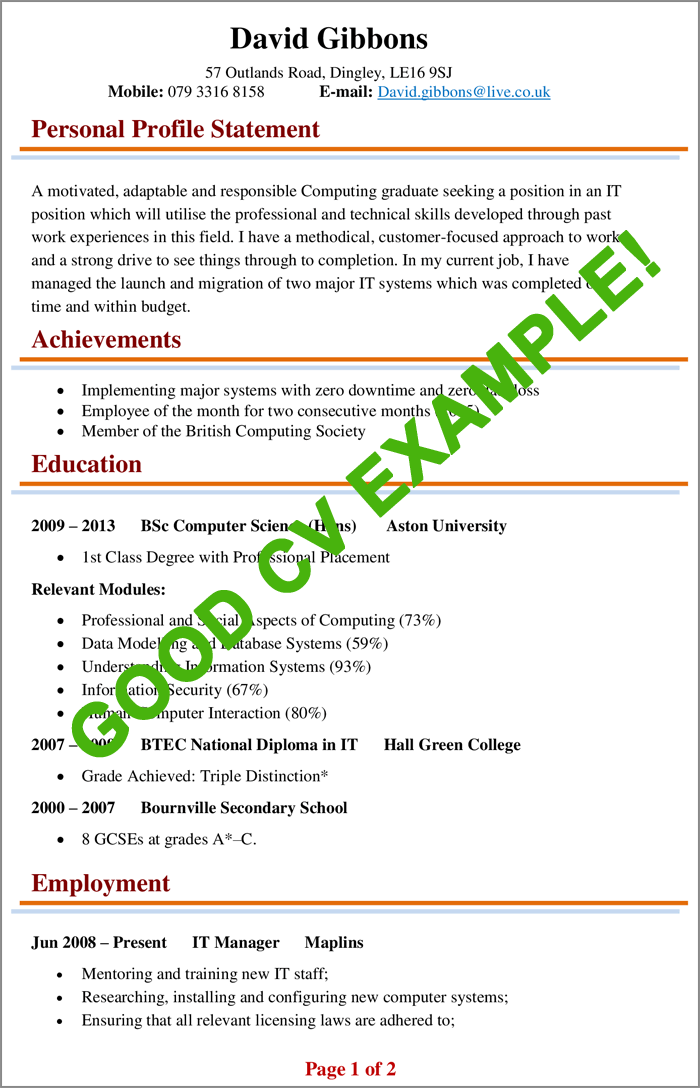
What makes this CV effective?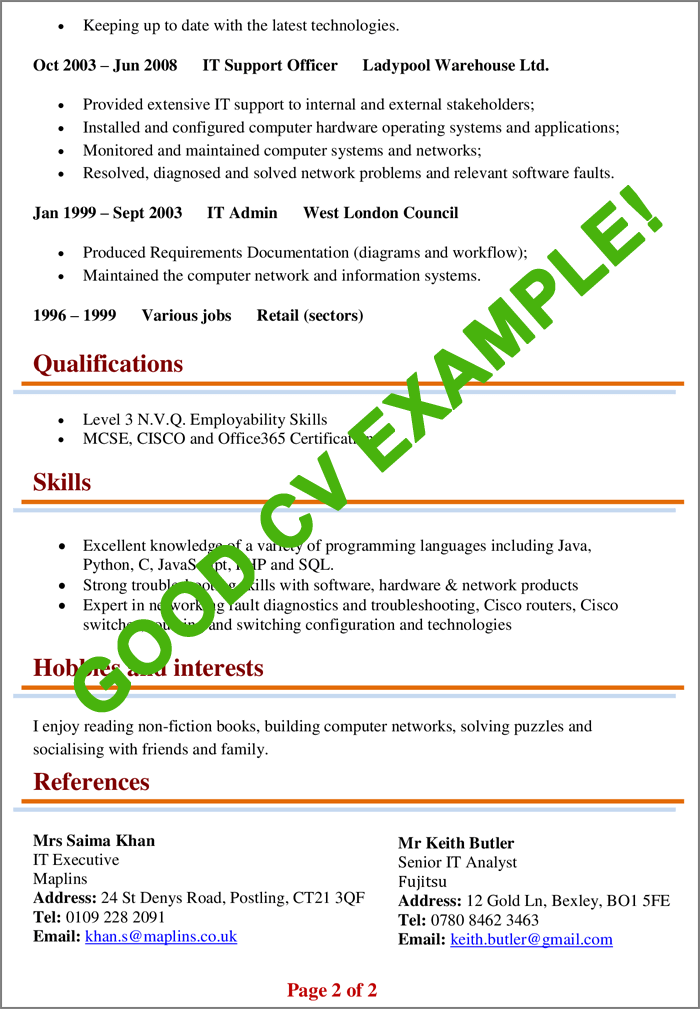
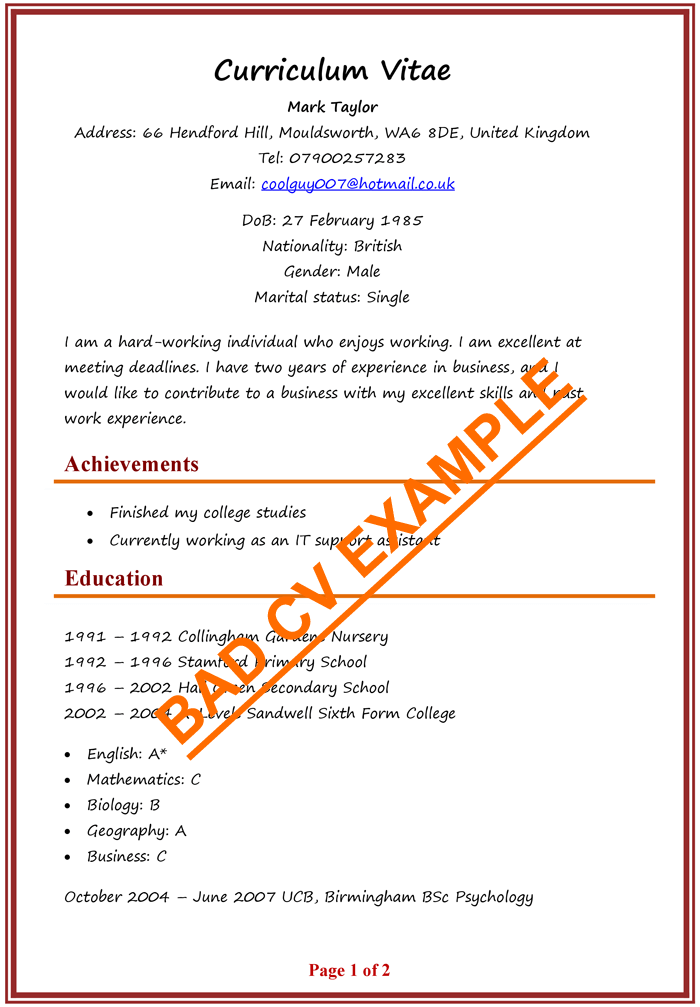
What makes this CV ineffective?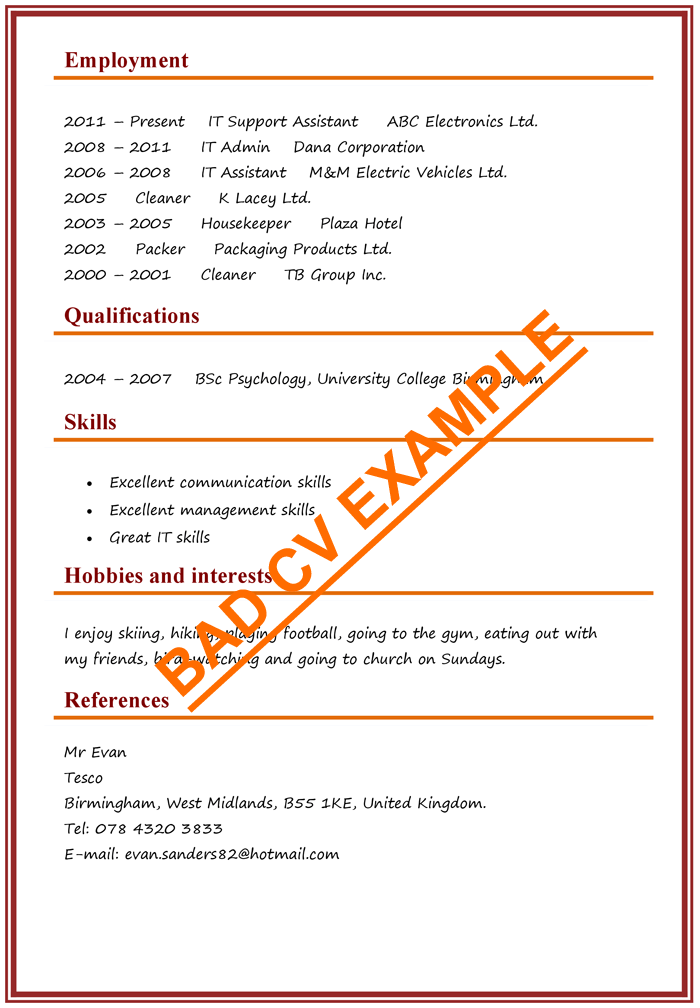
The personal details section is located right at the top of your CV, and it is the first thing that a prospective employer will see.
Bad example:
Curriculum Vitae
Mark Taylor
Address: 66 Hendford Hill, Mouldsworth, WA6 8DE, United Kingdom
Tel: 07900257283
Email: [email protected]
DoB: 27 February 1985
Nationality: British
Gender: Male
Marital status: Single
Comments & tips for improvement:
Good example:
David Gibbons
57 Outlands Road, Dingley, LE16 9SJ
Mob: 079 3316 8158
Email: [email protected]
That’s much better, right?
A personal profile is a short statement that tells the employer about your personal skills, qualities, experiences and career ambitions.
Bad example:
I am a hard-working individual who enjoys working. I am excellent at meeting deadlines. I have two years of experience in business, and I would like to contribute to a business with my excellent skills and past work experience.
Comments & tips for improvement:
Good example:
Personal Profile Statement
A motivated, adaptable and responsible Computing graduate seeking a position in an IT position which will utilise the professional and technical skills developed through past work experiences in this field. I have a methodical, customer-focused approach to work and a strong drive to see things through to completion. In my current job, I have managed the launch and migration of two major IT systems which was completed on time and within budget.
The achievements section, as the name suggests, contains a short list of impressive achievements or accomplishments that are a testimony of your skills, abilities, determination and desire to be successful.
Bad example:
Comments & tips for improvement:
Good example:
Achievements
Very impressive!
The education section contains brief information about your education and qualifications background. Together with the employment and work experience section, it forms the bulk of your CV.
Bad example:
1991 – 1992 Collingham Gardens Nursery
1992 – 1996 Stamford Primary School
1996 – 2002 Hall Green Secondary School
2002 – 2004 A-Levels Sandwell Sixth Form College
October 2004 – June 2007 UCB, Birmingham BSc Psychology
Comments & tips for improvement:
Good example:
Education and Training
2009 – 2013 BSc Computer Science (Hons) Aston University
Relevant Modules:
2007 – 2009 BTEC National Diploma in IT Hall Green College
2000 – 2007 Bournville Secondary School
That’s much better!
The employment and work experience section of your CV contains information on your previous jobs and work history. Employers are particularly interested in this section because relevant work experience is highly valued and usually an essential requirement for many jobs.
Bad example:
2011 – Present IT Support Assistant ABC Electronics Ltd.
2008 – 2011 IT Admin Tesco
2006 – 2008 IT Assistant M&M Electric Vehicles Ltd.
2005 Cleaner K Lacey Ltd.
2003 – 2005 Housekeeper Plaza Hotel
2002 Packer Packaging Products Ltd.
2000 – 2001 Cleaner TB Group Inc.
Comments & tips for improvement:
Good example:
Employment history
Jun 2008 – Present IT Manager Maplins
Oct 2003 – Jun 2008 IT Support Officer Ladypool Warehouse Ltd.
Jan 1999 – Sept 2003 IT Admin West London Council
1996 – 1999 Various jobs Retail (sectors)
Perfect!
The qualifications section is an optional part of your CV and should contain a list of your professional training, courses and/or qualifications.
Bad example:
2004 – 2007 BSc Psychology, University College Birmingham
Comments & tips for improvement:
Good example:
In the skills section, you should include a list of your key skills and abilities that will enable you to do the advertised job well. Remember, only include skills that are relevant, transferable and add value to your application.
Bad example:
Comments & tips for improvement:
Good example:
Looking at this skills list will give any employer the impression that this candidate knows exactly what they are talking about!
You should use the hobbies and interests section of your CV to demonstrate that you’re a well-rounded person who is engaged in extracurricular activities and the community.
Bad example:
I enjoy skiing, hiking, playing football, going to the gym, eating out with my friends, bird-watching and going to church on Sundays.
Comments & tips for improvement:
Good example:
Hobbies and interests
I enjoy reading non-fiction books, building computer networks, solving puzzles and socialising with friends and family.
The references section is the final part of your CV containing the contact details of two people who know you well, have worked with you before and who can vouch for you to the employer.
If you decide not to include references on your CV, you can simply write “references available upon request.”
Bad example:
Mr Evan
Tesco
Birmingham, West Midlands, B55 1KE, United Kingdom.
Tel: 078 4320 3833
E-mail: [email protected]
Comments & tips for improvement:
Good example:
Mrs Saima Khan
IT Executive
Maplins
Address: 24 St Denys Road, Postling, CT21 3QF
Tel: 0109 228 2091
Email: [email protected]
Congratulations! You should now have a pretty good idea about how to write your perfect CV by following standard CV writing conventions and avoiding some common mistakes.
Check out the templates below for more CV samples:
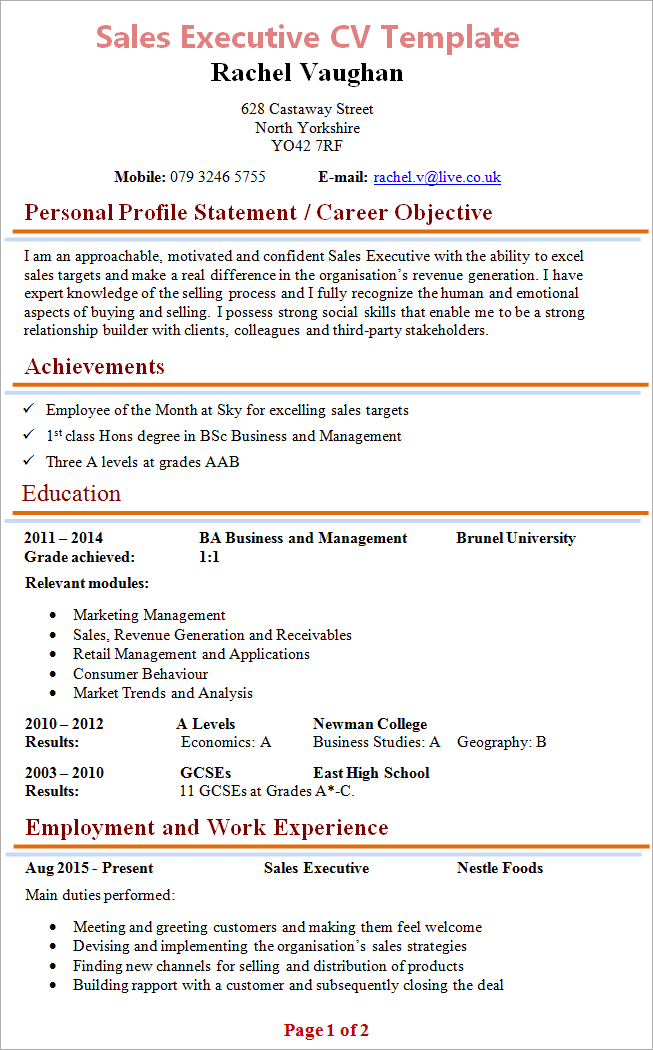
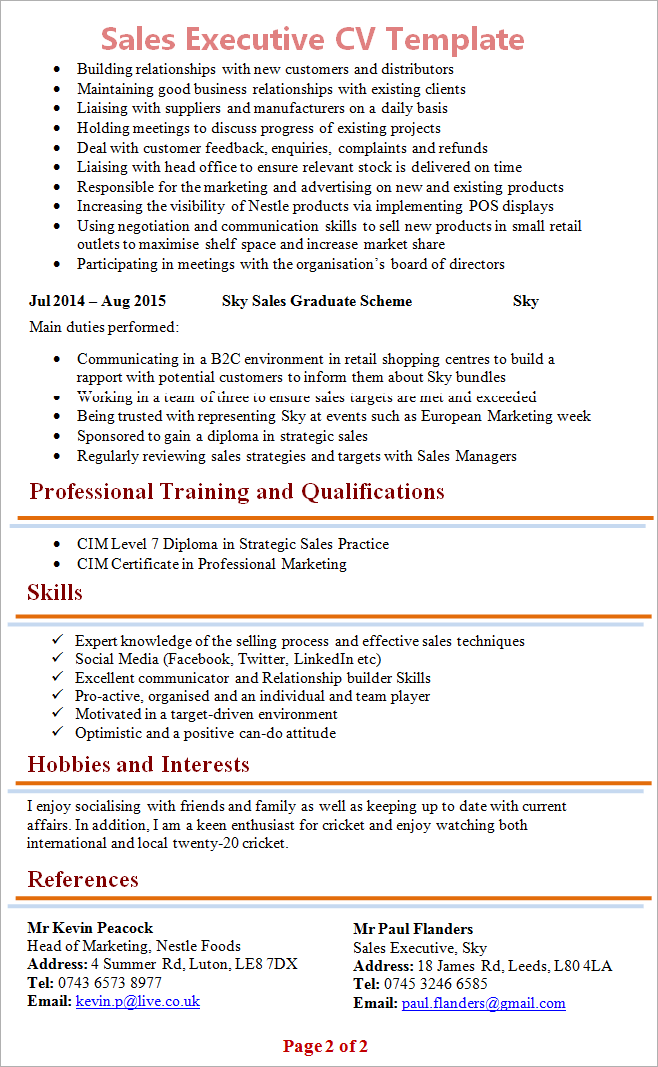
(Download: sales CV template)
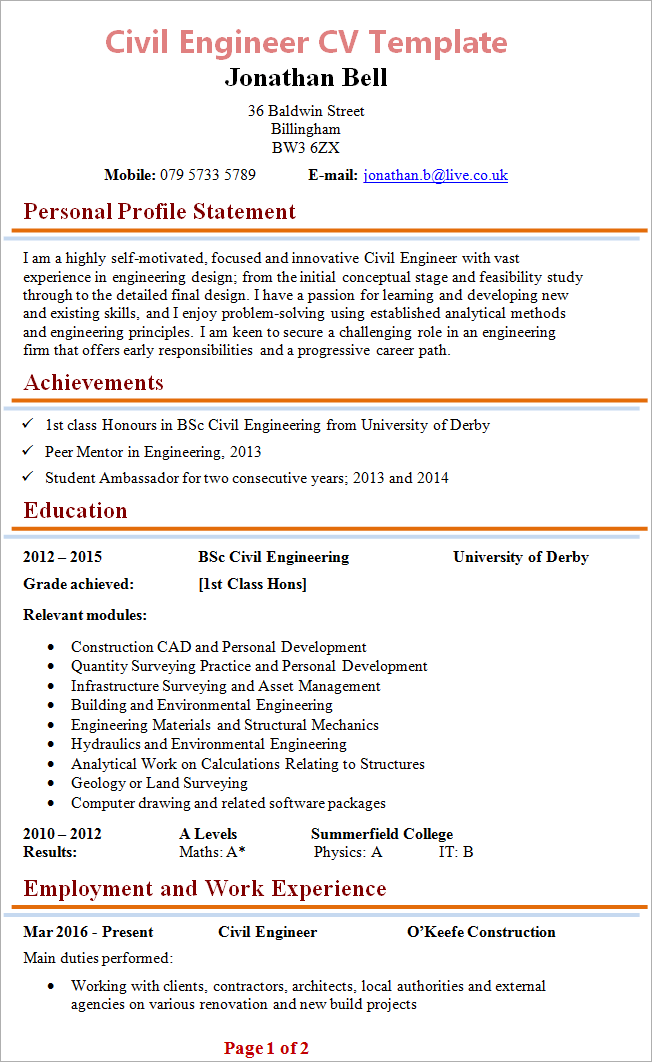
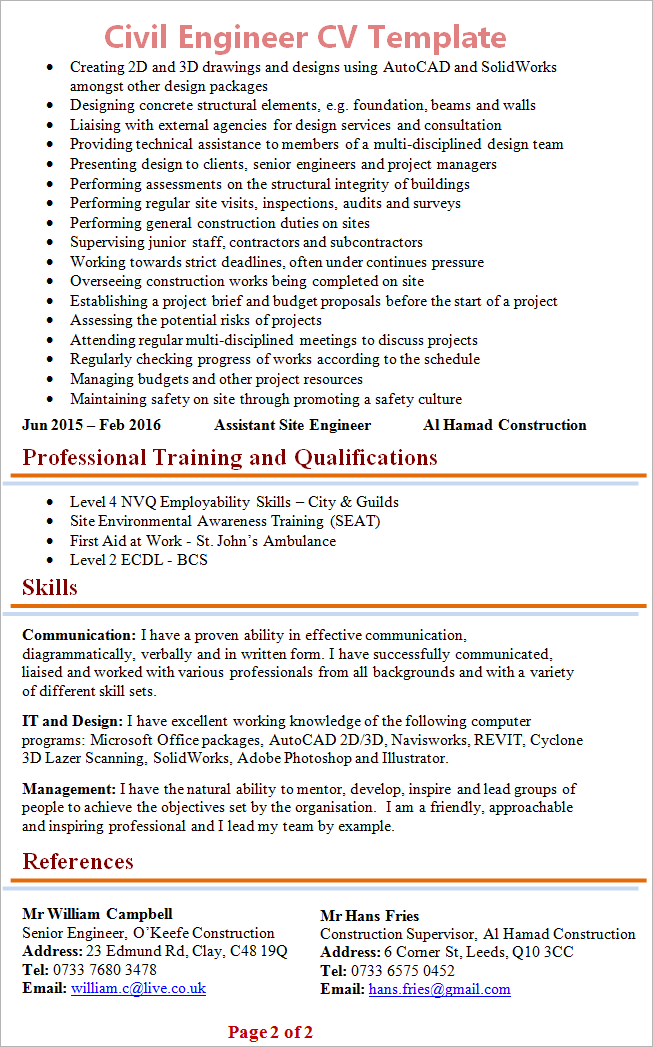
(Download: engineering CV template)
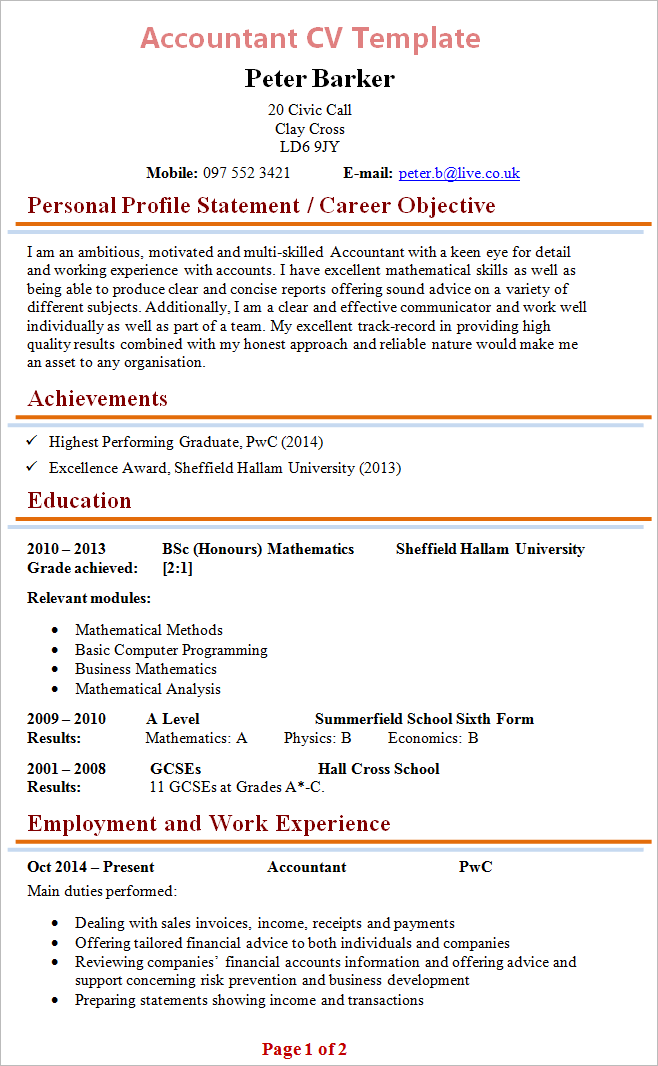
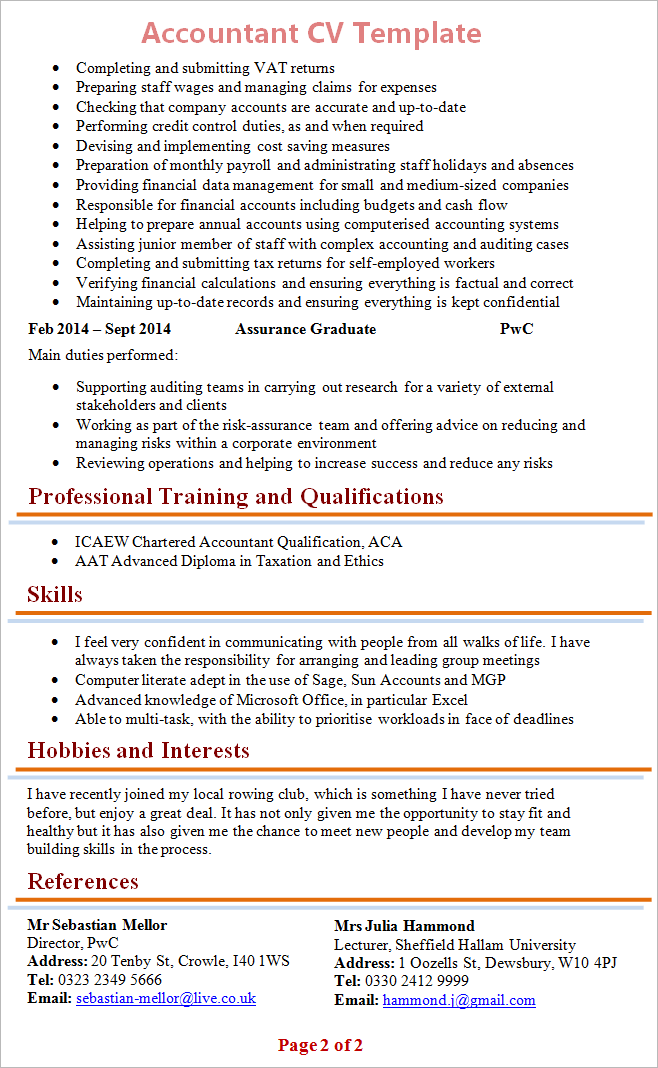
(Download: finance CV example)
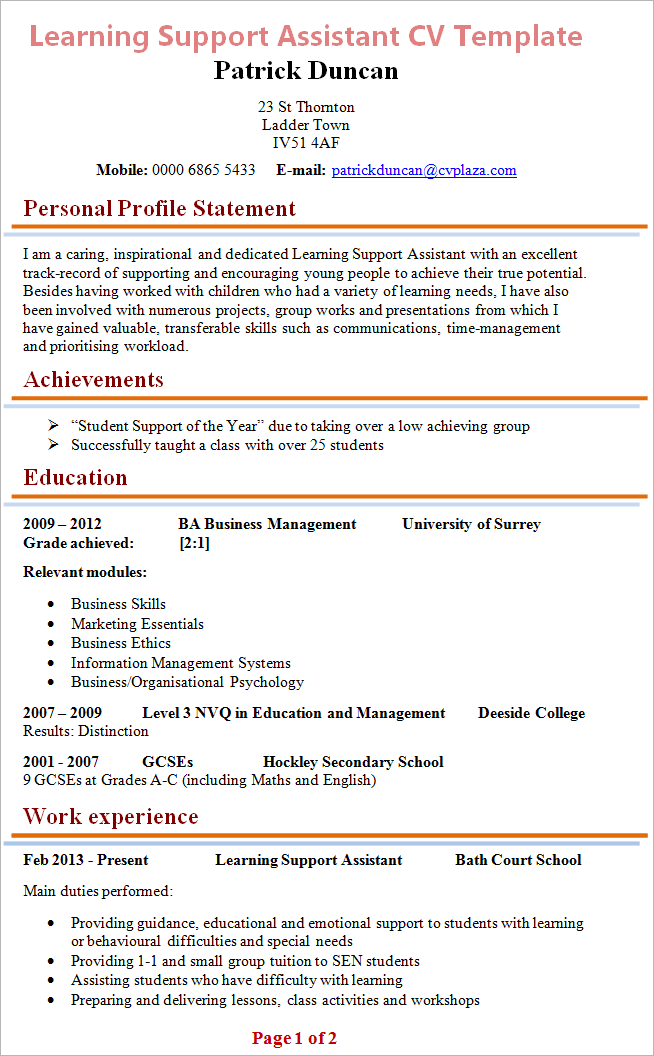
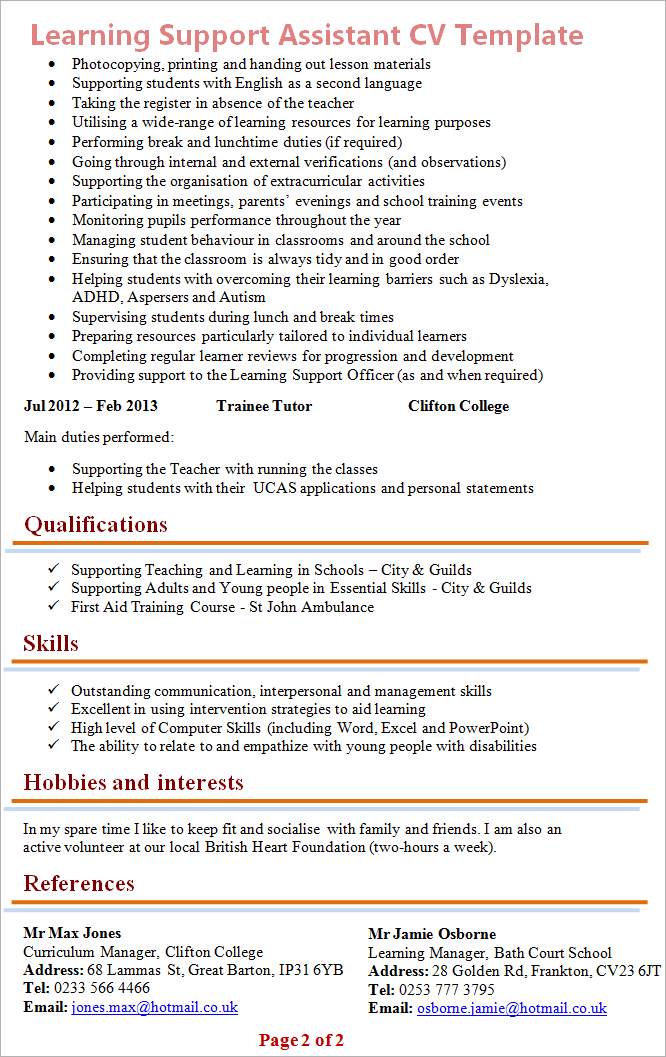
(Download: education CV template)
Not found what you were looking for? Check out these great CV examples of more than 100+ jobs from 18 different job sectors!
A school leaver CV is an ideal format for young people who have just finished school or college and have little or no work experience. This CV template is also recommended for those just entering the world of work.
A graduate CV is an ideal format for university students, graduates and young professionals who possess at least an undergraduate degree and some work experience. This CV template is also the recommended format for most people.
A skills-based CV, also known as a functional CV, is an ideal format for candidates that do not have the relevant qualifications or work experience but do have transferable skills that could help them do the job well.
An academic CV, as the name suggests, is a CV format that is used by teachers, researchers and academics. Academic CVs are used to apply for teaching or research positions and focus highly on academic merit and qualifications.
1. Use short sentences and bullet points
It is important to remember that recruiters tend to scan CVs rather than read them in detail. Using short sentences and bullet points will improve the legibility and impact of your CV.
2. Select an appropriate fontThe most common recommended fonts for writing a CV are Times New Romans (12 pt), Arial (11 pt), Verdana (11 pt) and Helvetica (12 pt).
3. Tailor your CV to the particular jobEach CV should be carefully amended and tailored to the job for which you are applying. Only include relevant information on your CV and use the same key phrases and terms as the job advertisement.
4. Use CV templates and examplesSome applicants make the mistake of writing their CV from scratch. You don’t have to reinvent the wheel! Be more time-efficient by using CV templates and CV examples for guidance and inspiration.
5. Get expert help & adviceWriting a perfect CV is an art! It is a good idea to have your CV checked out by careers professionals who are specialised in job applications.
Good luck!